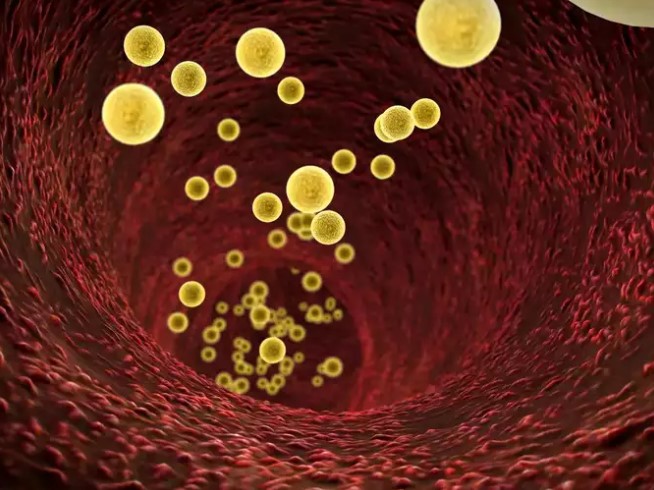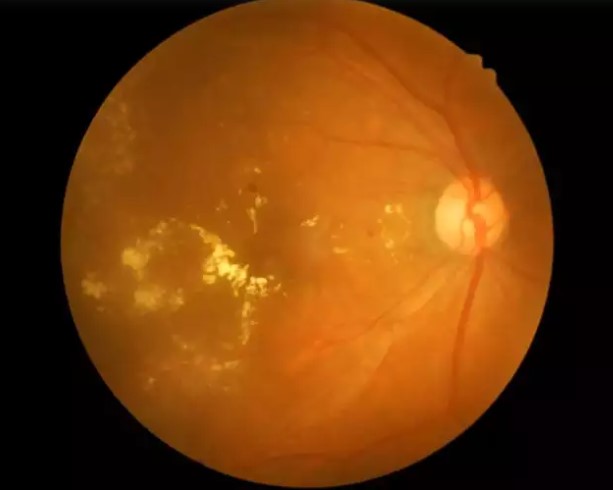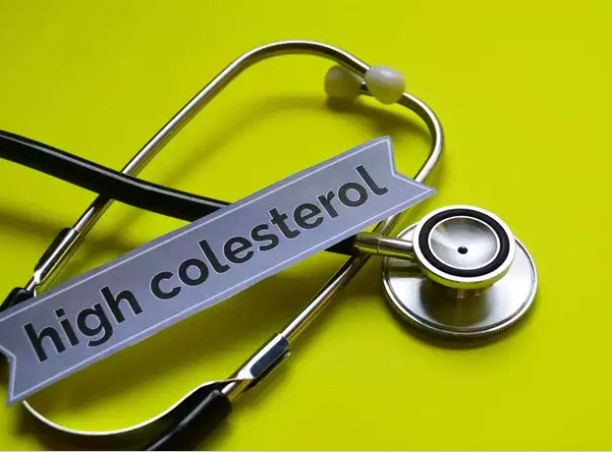How high cholesterol can affect the eyes

Cholesterol is a waxy substance found in one's blood, which is necessary to build healthy cells.
However, the bad name that cholesterol has gained over the years is due to its association with an increased risk of heart disease. But what is important to note is that only high levels of cholesterol is what raises one's cardiovascular disease risk.
Additionally, high cholesterol not only affects your heart, but it can also impact your eyes negatively.
One of the most common ways cholesterol can affect your eyes is the presence of xanthelasma, small, yellowish fatty deposits in the skin around your eyes, the Cleveland Clinic explains. It most often forms in the eyelids, says the health body.
According to Independent optician Care Optics, "high presence of bad cholesterol in your blood can cause problems when it starts to gather in your eyes".
Let us find out what to look out for...
What happens when 'bad' cholesterol collects in the eyes

The Independent optician Care Optics says that there are three main signs that signal 'bad' cholesterol build up in your eyes. These include:
The warning signs in your body pointing to high cholesterol

- White, grey and yellow deposits forming around the cornea
- Blurry vision
- Yellow bumps around the eyes
At the onset of these signs, experts recommend getting oneself tested immediately.
Furthermore, Care Optics claim that these signs most often lead to more severe eye issues.
Age-related macular degeneration
The UK's National Health Services defines age-related macular degeneration (AMD) as a common condition that affects the middle part of your vision.
Prevalent in people in their 50's and 60's, AMD does not cause total blindness, but can make activities like reading and recognising faces difficult, the health body says.
Experts believe the damage can be caused by drusen - small yellow deposits of fatty lipids that collect on the retina.
What is retinal vein occlusion?

Another eye condition that can arise due to 'bad' cholesterol build up in the retina is retinal vein occlusion.
The retina is a thin layer of tissue that lies at the back of your eyes. It is what turns light into signals to the brain, converting them into sight. That said, when a vein in the retina becomes blocked, forming clots, it leads to retinal vein occlusion. Some occlusions can be removed, leading to partial and temporary blindness. However, some people may suffer from permanent blindness.
Corneal arcus is another eye condition to watch out for

The cornea is the thin, clear surface of the eye that covers the iris, pupil, and anterior chamber.
Corneal arcus, also known as arcus senilis in older adults or arcus juvenilis in those under 40 years of age, occurs when cholesterol forms around the rim of the cornea. It is the deposition of lipids in the peripheral cornea.
Not only high cholesterol, these lipids also include phospholipids, and triglycerides.
High cholesterol is called a silent disease, but beware of pain indications in legs and arms

Most high cholesterol cases are asymptomatic and only get detected when a person goes for a routine check up.
However, high cholesterol can lead to different ailments in the body, which can indicate the presence of the disease.
Given that high cholesterol can harm your arteries by promoting buildup of plaque in the arteries, it raises your risk for peripheral arterial disease (PAD). This process is also known as atherosclerosis, which affects the arteries in your legs and arms.
A key symptom of PAD is intermittent claudication, which causes leg cramps that begin when you’re moving around but stop when you rest. This indicates reduced blood flow caused by the growing plaque in your artery, explains the Cleveland Clinic.
PAD is more common in your legs but can also happen in your arms, the health body further opines.
What should you do

Care Optics says, “Cholesterol can be prevented with a good diet, good hydration and exercise."
“A healthy diet rich in fruits and vegetables will provide you with antioxidants, lutein, zeaxanthin, vitamin C and E, reducing the fat in your bloodstream, the pressure in your veins and the likelihood of developing a clot," the health body adds.
Furthermore, experts recommend avoiding red meats, drinking at least 1.5 liters of water daily and having an exercise routine.
As per the NHS, fatty foods are the source of increased cholesterol in the body.
“To reduce your cholesterol, try to cut down on fatty food, especially food that contains a type of fat called saturated fat,” the health agency recommends.







































